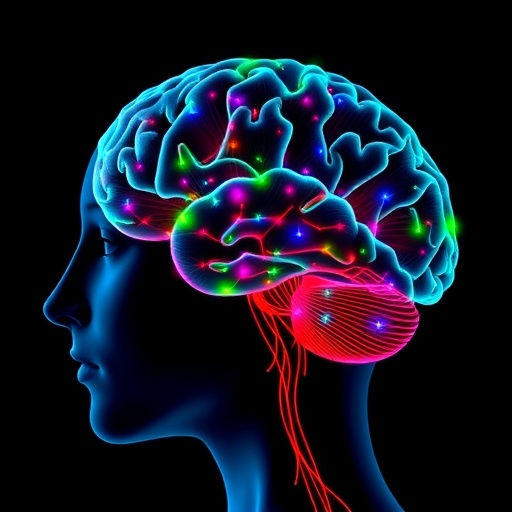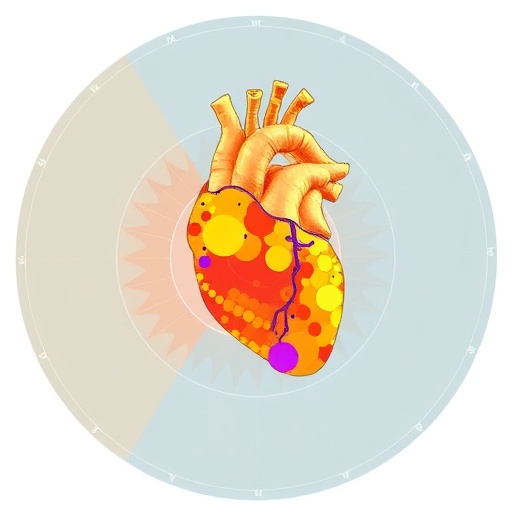In the intricate architecture of the mammalian brain, few structures have garnered as much interest as the basal ganglia, a collection of nuclei renowned for their indispensable role in motor control. Among these, the sensorimotor arm, particularly the dorsolateral striatum (DLS) in rodents, has been traditionally regarded as a central hub for orchestrating movement execution. However, a groundbreaking study published in Nature Neuroscience in 2025 challenges this longstanding view by revealing a remarkable functional dissociation in the contributions of the DLS to naturalistic versus task-specific motor behaviors. This research not only upends conventional models of basal ganglia function but also provides unprecedented insight into how neural circuits adaptively reshape motor output depending on behavioral contexts.
Historically, the sensorimotor striatum has been depicted as a vital node in the generation and refinement of learned motor sequences. Such understanding stems largely from experiments demonstrating that lesions or inactivation of the DLS can severely impair task-specific learned behaviors, which are typically trained under constrained laboratory conditions. Yet, these traditional paradigms may not fully capture the breadth of motor functions that animals exhibit spontaneously in their day-to-day lives. Hardcastle et al., the team spearheading this study, confronted this gap by designing an innovative comparative framework, juxtaposing the DLS’s role during free exploratory behaviors against its established involvement in task-constrained motor tasks.
In their experiments, the researchers employed rat models to probe the functional role of the DLS within two distinctive behavioral domains. First, they assessed naturalistic behaviors such as rearing, grooming, and ambulation during free exploration — actions that animals spontaneously execute without explicit external cues or reinforcement. Concurrently, they evaluated performance during a trained motor task requiring precise, learned movements to obtain rewards. By integrating lesion analyses with electrophysiological recordings, their approach provided a multi-layered examination of both behavioral outcomes and underlying neural dynamics.
.adsslot_4rsKHZkivL{ width:728px !important; height:90px !important; }
@media (max-width:1199px) { .adsslot_4rsKHZkivL{ width:468px !important; height:60px !important; } }
@media (max-width:767px) { .adsslot_4rsKHZkivL{ width:320px !important; height:50px !important; } }
ADVERTISEMENT
The results were strikingly counterintuitive: whereas lesions in the DLS predictably disrupted the execution of the learned motor task, these same lesions exerted negligible effects on spontaneous naturalistic movements. Detailed behavioral quantifications post-lesion demonstrated intact frequencies, durations, and kinematic profiles for grooming, walking, and rearing behaviors. This dissociation suggested that the sensorimotor basal ganglia may not serve as a universal executor of all motor behaviors but rather operate preferentially within task-demanding contexts.
Turning to neuronal activity, the researchers uncovered further subtleties underlying this domain-specific role. Using high-density electrophysiological recordings from the DLS, neural firing patterns were monitored during both free exploration and task performance to decipher how movement parameters were encoded. Importantly, while DLS neurons exhibited modulation correlated with movement kinematics in both conditions, the nature of the neural codes diverged dramatically between the two behavioral states. During stereotyped task execution, DLS activity spanned a defined “motor-potent space,” effectively shaping and optimizing precise motor outputs essential for task success.
In contrast, during free exploration, DLS activity reflected kinematic variables in a more diffuse and less structured manner, underscoring a diminished causal influence on movement generation. This pattern implies that during naturalistic behaviors, sensorimotor striatum neurons may process movement information in ways that differ fundamentally from those deployed in goal-directed tasks, potentially serving functions such as sensory feedback integration or state monitoring rather than direct motor control.
These insights carry profound implications for contemporary theories of basal ganglia function. The canonical model posits that sensorimotor striatum acts as a motor command center, gating and sequencing movements in both learned and spontaneous contexts. By delineating a clear functional bifurcation between spontaneous and task-guided behaviors, Hardcastle and colleagues advocate for a more nuanced framework: the basal ganglia may flexibly reconfigure their output modes depending on task relevance, shifting from a passive reflector to an active sculptor of behavior when precision and learning demands arise.
Beyond conceptual advances, this work bears significance for understanding neurological disorders characterized by basal ganglia dysfunction, such as Parkinson’s disease and Huntington’s disease. In these conditions, impairments in motor control are often studied through task-based paradigms that may neglect the preservation or alteration of spontaneous movements. Recognizing that task-specific motor deficits may arise from disruptions in context-dependent basal ganglia operations offers new vistas for targeted therapeutic interventions and rehabilitative strategies.
The experimental design employed in this study was notably rigorous. The team utilized precise lesion techniques to selectively disrupt the DLS, ensuring minimal off-target effects. Behavioral assays were carefully balanced to include a rich repertoire of naturalistic and trained movements, enabling robust comparative analyses. Simultaneously, electrophysiological recordings employed state-of-the-art silicon probe arrays permitting high temporal and spatial resolution capture of striatal neuronal ensembles. This multimodal approach allowed the fusion of causal and correlational evidence, strengthening the conclusions drawn.
Moreover, the data analyses included sophisticated computational modeling of neural population codes to characterize the dimensionality and potency of motor signals encoded by DLS neurons. By quantifying how neuronal firing patterns mapped onto kinematic parameters such as joint angles and velocity, the authors revealed that the motor-potent space implicated in task performance was markedly reduced during free behavior. Such metrics offered quantifiable proxies for the functional divergence of striatal processing modes.
Crucially, these findings challenge the widely held assumption that sensorimotor basal ganglia universally govern movement initiation and vigor. Instead, the sensorimotor striatum emerges as a dynamic hub capable of toggling between representational roles depending on behavioral context—a conceptual leap that reshapes understanding of motor control circuitry. This flexibility may be evolutionarily advantageous, allowing animals to conserve neural resources during routine behaviors while recruiting specialized circuits for demanding learned tasks.
The study’s results also provoke questions about the upstream and downstream interactions of the sensorimotor striatum. How do corticostriatal inputs differ between exploratory and task conditions to influence DLS activity? What is the role of dopaminergic neuromodulation in modulating these context-dependent codes? And how do output pathways from the basal ganglia integrate with brainstem and cortical motor centers to effectuate variable motor outcomes? Future research illuminating these avenues may unravel the multilayered circuitry orchestrating movement at unprecedented resolution.
In conclusion, Hardcastle et al.’s work delivers a paradigm-shifting narrative about the sensorimotor arm of the basal ganglia. By elucidating that the dorsolateral striatum’s influence on movement is not monolithic but varies strikingly with behavioral context, this research reframes central dogmas in motor neuroscience. The sensorimotor basal ganglia, rather than being an omnipresent motor command giver, flexibly reallocate their computational resources to amplify task-specific behaviors while permitting spontaneous movements to unfold relatively independently. This conceptual advance opens new paths for understanding how the brain balances automaticity and cognitive control in behavior and may catalyze novel clinical approaches for movement disorders.
Subject of Research: Functional specialization of the sensorimotor striatum (dorsolateral striatum) in movement control across behavioral domains in rodents.
Article Title: Differential kinematic coding in sensorimotor striatum across behavioral domains reflects different contributions to movement.
Article References:
Hardcastle, K., Marshall, J.D., Gellis, A. et al. Differential kinematic coding in sensorimotor striatum across behavioral domains reflects different contributions to movement. Nat Neurosci (2025). https://doi.org/10.1038/s41593-025-02026-w
Image Credits: AI Generated
Tags: adaptations in movement behaviorsBasal ganglia motor controlchallenges to conventional neuroscience modelscomparative frameworks in behavioral studiesdorsolateral striatum functionsfunctional dissociation in striatumimplications of striatal codinginnovative research in neurosciencelearned motor sequences in rodentsnaturalistic motor behaviorsneural circuits in motor outputtask-specific movement execution





